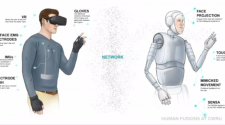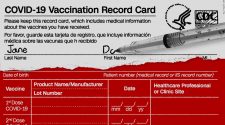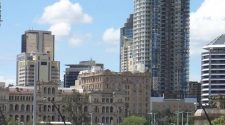Heat stroke, also known as sunstroke, is a dangerous malady that happens when your internal body temperature rises above 104 degrees Fahrenheit (40 degrees Celsius). Caused by high temperatures, if gone untreated, could lead to damage to many of your internal organs, including your brain. Avoiding this, especially in the hot summer months, is very important. The simplest way to ensure staying healthy is by drinking lots of water. Drinking water can be made more enjoyable by adding flavors, or by motivating yourself with a reward for drinking more than 8 cups of water each day.
Heat Stroke Symptoms
- Vomiting
- Headache
- Confusion or agitation
- Muscle weakness
- Not sweating in the heat
- Seizures
- Nausea
- Fast pulse or rapid breathing
- Fainting
- Loss of appetite
Heat Stroke Prevention
- Stay hydrated! Staying hydrated prevents you from losing too much liquid in your body by sweating.
- Wear loose clothing. As much as you want to wear as little clothing as possible, wearing loose, billowy clothing is actually much better for keeping you cool because of how little it actually touches your body, while also protecting you from the sun’s harmful rays.
- WEAR SUNSCREEN!!! This should go without saying, but sunscreen should be applied regularly, and only contain SPF 30 or higher.
- Try to avoid being outside. Less exposure to the sun means less risk.
- Try not to drink very much alcohol or coffee. Both of these drinks are dehydrating, and being hydrated is one of your main defenses against heat stroke.
- Avoid heavy exercise
- Invest in a fan. For a floor fan, try this bestselling, oscillating one.
- Eating foods with heavy water concentrations, such as watermelon, cucumbers, and celery
Heat Stroke First Aid
- Call 911 immediately if you suspect someone has heat stroke. The longer you wait for medical treatment, the worse the condition.
- Keep them as cool as possible. Move them to an air-conditioned area, if you can, or at least as far out of direct sunlight as you can find.
- Put them in cold water, such as a shower or bath. Natural bodies of water work too, as long as they’re cold and the patient has no risk of drowning.
- Fan them while spraying them with cold water.
- Put them in an ice bath, BUT only if they got heat stroke from exercising. It’s dangerous to put children or senior citizens in an ice bath, and especially if it wasn’t sustained while exercising.
- Put ice packs in sensitive places close to blood vessels. Ice packs are best around the neck, armpits, groin, back, and inner knees. You can buy a pack of 24 disposable ice packs, and keep them in your first aid kit in case of an emergency.
- Have them drink lots of water
- Check their body temperature regularly
- Make sure they’re lying down, with their feet slightly propped up
Higher Risk for Heatstroke Included People with:
- Diabetes
- Alcoholism
- High blood pressure
- Physically exhausting jobs, such as gardening
- Recreational drug usage
- Mental illnesses
- Certain medicines, including antihistamines, diuretics, SSRIs, antipsychotics, and heart medicine.
Never leave children or pets in the car on a hot day. Between the year 2000, and 2017, over 500 children have died from being left in the car. Pets, especially dogs, are even more susceptible to heat. The inside of a parked car can quickly reach 120 degrees Fahrenheit. Leaving a window cracked does not do very much, and it has been recommended that you bring your pet to the storefront, and leave it in the shade with a bowl of water, if possible. Children have occasionally been forgotten in the back seats of cars. There are many ways to avoid this, such as leaving your wallet in the backseat next to them. If a child is left on purpose in a car, the guardian can be liable to prosecution.
Swimming may be a good way to keep cool, but always remember to drink water and apply sunscreen. Another way to keep cool and have fun this summer is to explore some. Museums and libraries typically have air-conditioning, along with some interesting things you might not have seen before. Heat exhaustion is often a precursor to heat stroke, so if you feel fatigued after spending some time in the sun, get to someplace cool as soon as possible, and start rehydrating.
















